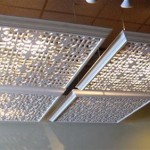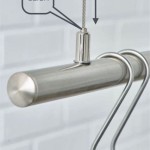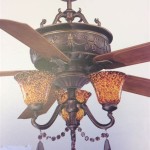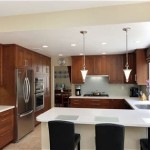Ceiling AC Vents in Houses: A Comprehensive Guide for German Residents
Ceiling AC vents are a common feature in homes across Germany, providing efficient cooling and a streamlined aesthetic. They are often integrated into modern construction, offering a discreet and effective way to distribute cool air throughout a living space. Understanding the different types, pros and cons, and maintenance considerations of ceiling AC vents empowers homeowners to make informed decisions regarding their home's cooling system.
Types of Ceiling AC Vents
A variety of ceiling AC vent types exist, each with its own advantages and disadvantages. The most common types include:
- Supply Vents: These vents, also known as diffusers, actively distribute cool air from the central AC unit into the room. Supply vents come in various designs, such as circular, rectangular, and linear, allowing for customization based on the room's layout and desired aesthetic.
- Return Vents: Unlike supply vents, return vents draw warm air back into the AC unit, completing the cooling cycle by circulating air throughout the house. Return vents are typically located in the ceiling, often concealed for a sleek appearance.
- Grilles: While less common, grilles can be used as ceiling AC vents. Grilles typically have a more prominent design, showcasing the airflow and adding a visual accent to the room. They are often used in conjunction with supply vents to offer a more visible and decorative approach to air circulation.
Advantages and Disadvantages of Ceiling AC Vents
Ceiling AC vents offer several advantages for homeowners in Germany, making them a popular choice for climate control. However, it is important to consider both the benefits and drawbacks before installation.
Advantages:
- Aesthetically Appealing: Ceiling AC vents blend seamlessly into the ceiling, maintaining a clean and uncluttered appearance. Unlike wall-mounted units or floor vents, ceiling vents do not obstruct floor space or detract from the room's overall design.
- Efficient Air Distribution: Ceiling AC vents effectively distribute cool air throughout the room, ensuring consistent temperature and comfort in every corner. This is especially beneficial in larger rooms where wall-mounted units might struggle to reach distant areas.
- Improved Indoor Air Quality: By efficiently moving air, ceiling AC vents contribute to better ventilation, reducing humidity and promoting air circulation. This can enhance indoor air quality, leading to a healthier living environment.
Disadvantages:
- Installation Complexity: Installing ceiling AC vents can be more complex than other types of vents due to the need for proper placement and integration with the existing ceiling structure. This may require professional installation, which can be more expensive than DIY options.
- Potential for Noise: Depending on the type and placement of the vent, some ceiling AC vents may generate audible noise, particularly during operation. This can be a concern for people sensitive to noise or those who prefer a quiet living environment.
- Limited Flexibility: Once installed, ceiling AC vents are generally fixed in their position, making it difficult to adjust airflow patterns or modify the system without significant structural work. This can restrict flexibility in future renovations or changes to the room's layout.
Maintenance Tips for Ceiling AC Vents
Proper maintenance is crucial to ensure the longevity and optimal performance of ceiling AC vents. Regular cleaning and inspection can prevent dust accumulation, improve airflow, and extend the lifespan of the system. Here are some essential maintenance tips:
- Regular Cleaning: Dust and debris can accumulate in ceiling AC vents, hindering airflow and reducing efficiency. It is recommended to clean the vents at least every three months using a vacuum cleaner with a brush attachment or a soft cloth and mild detergent.
- Inspection for Obstructions: Regularly inspect the vents for any signs of obstructions, such as accumulated dust, dirt, or small objects. Remove any obstructions to ensure smooth airflow and prevent damage to the vent system.
- Check for Loose Connections: Loose connections between the vent and the ductwork can lead to airflow problems and noise. Check for loose connections and tighten any loose screws or clamps as needed.
- Professional Maintenance: While regular cleaning and inspection can be done by homeowners, it is advisable to schedule professional maintenance at least once a year to ensure the overall health and efficiency of the AC system.
By understanding the types, advantages, disadvantages, and maintenance requirements of ceiling AC vents, German homeowners can make informed decisions regarding their home's cooling system. Whether considering a new installation or maintaining existing vents, proper planning and care can ensure a comfortable and energy-efficient living environment.

What Are The Diffe Types Of Vents In Your Home Jackson And Sons

How To Remove Mold In Ac Ducts Forbes Home

Why Are Heat Vents Placed Under Windows Dows Climate Care

Faq About Mvhr Systems Cleaning Ducts Indoor Air Quality And Maintenance Explained Heat Space Light Ltd

Whole House Fans Building America Solution Center

How To Make Over Your Ugly Air Vents Architectural Digest

What Is The Best Vent Cover For Ceiling Vents Try A Guardavent By Karymi

Ductless Heat Pumps Everything You Need To Know Before Buy Forbes Home

Whole House Fans Everything You Need To Know Attics And More

How Much Does Air Duct Replacement Cost In 2024 Forbes Home
Related Posts








